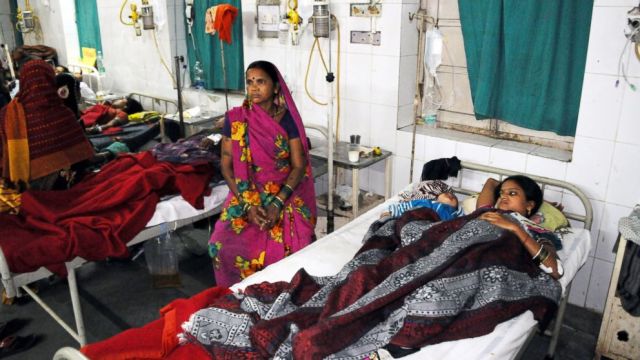Earlier this week it came to light that 12 women died after receiving botched government-sanctioned sterilizations in Chhatisgarh, India. As the internet’s ire and public opinion weighed down on the actors in this scandal, fingers were pointed and people were blamed. Everything from the exploitative doctor to his rusty equipment to the drugs he administered were faulted, and rightly so. Yet, the Indian government and the world as a whole have yet to blame the true cause of these deaths – the lack of reproductive justice for women in the developing world.
Though India is a middle-income country, many regions and communities within the subcontinent are continuously overlooked when it comes to government funding. Rural areas, where eduction and medical care are still not widely available for poor citizens, belie the achievements in development more cosmopolitan areas of the country are enjoying. Here women are tasked with the double reproductive burden of caring for the family and for their fields. In addition, testimonials from women in the area, offered through NGOs and documentaries like It’s a Girl! show that reproductive power and choice often lies with men.
When men and their parents are the ones determining whether a woman has children, keeps her children, or is allowed to care for her children, the topic of contraception is not even broached. Though there are NGOs that pass out leaflets and condoms with their sex education, there are still thousands of women who cannot utilize these resources. When women do not control their reproductive lives, it is near impossible for them to take control of their futures. Children keep them home when they could be working and making their own money. Their autonomy is tied up, crudely speaking, in their tubes.
Within this context, sterilization and permanent control over reproduction can seem desperately appealing despite the high risk of fatality. Men, in many cases, may even support their wives getting tube litigations as they find themselves unable to afford more children and access to alternative resources is limited or nonexistent. So, poverty, patriarchy, and desperation come together to create a terrible formula that leave women dead or critically injured.
This whole incident, as many pundits have mentioned, sounds incredibly similar to the forced sterilizations that were carried about against men and boys in the 1970s under Indira Gandhi’s term in office. Those six million sterilizations, conducted almost exclusively on poor males, were more a demonstration of the power of the Indian government rather than any real attempt at curbing population growth. Sterilization then and now is an artificial solution to much more pervasive problems.
Dismantling the systems that give rise to the need for sterilization is a lengthy and expensive process that the Indian government does not want to embark on. Despite the public anger over this situation it is unlikely the Indian government will offer much by way of policy and change. In a country of 1.5 billion, 12 women and 1 inept doctor are not even a drop in the ocean.
